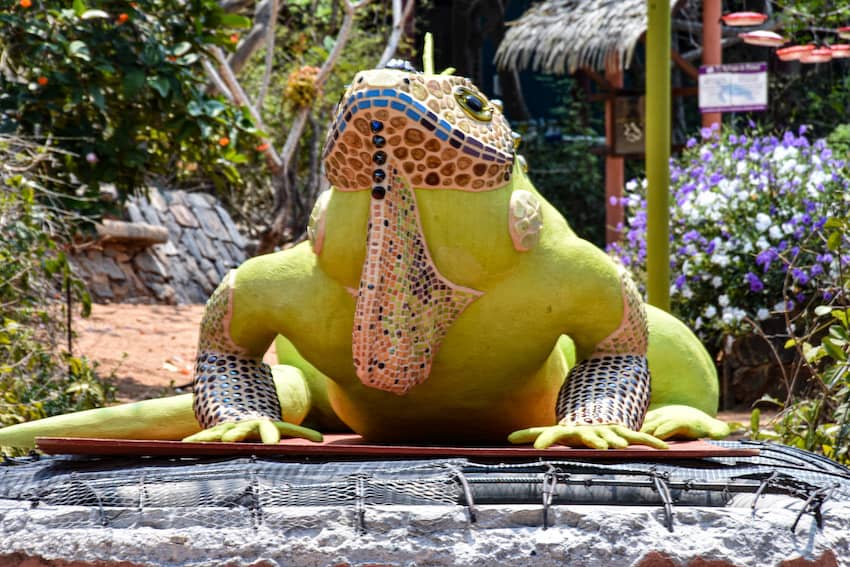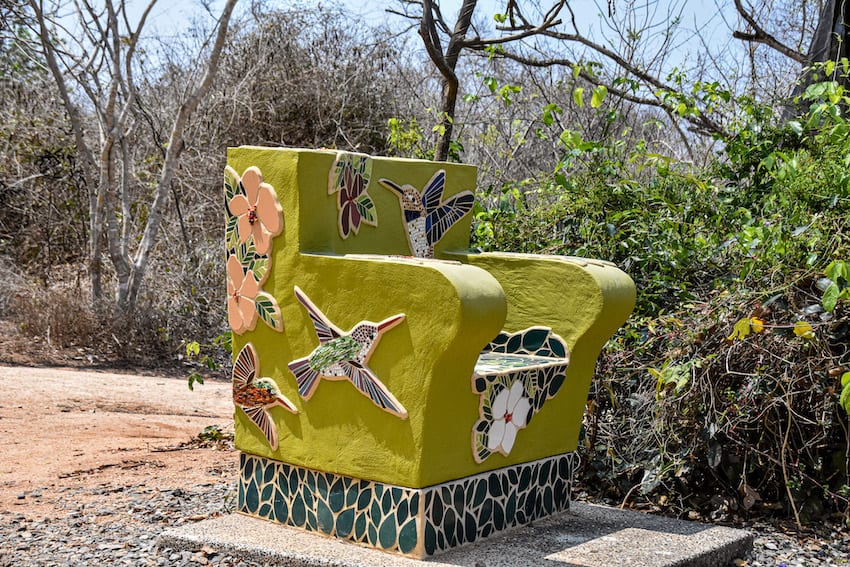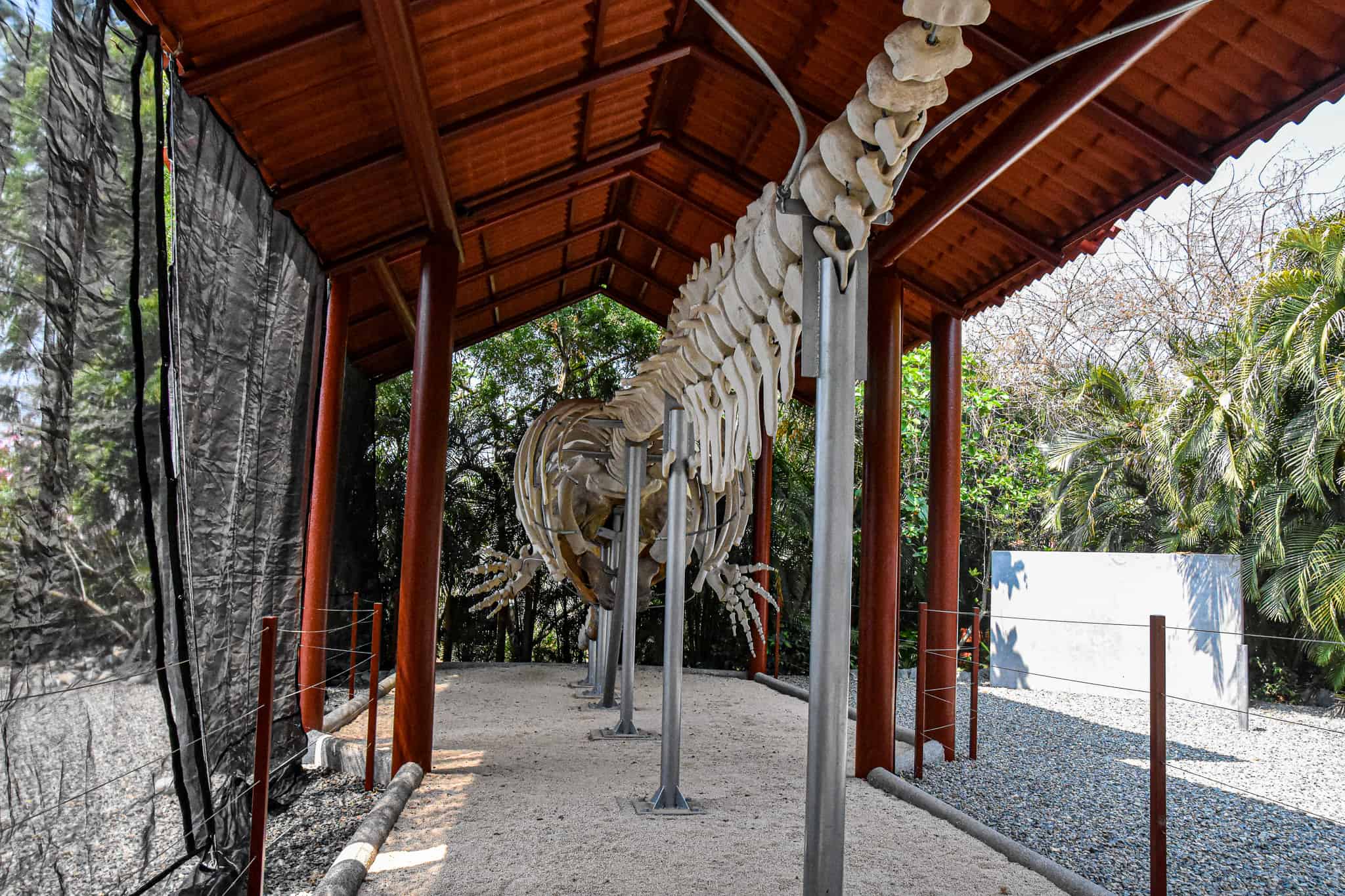El Refugio de Potosí, a hidden eco-reserve on the Guerrero coast

Whenever I get the chance to travel, I enjoy searching out museums, sanctuaries or parks and special hidden gems. Until recently, however, I’d neglected to visit the extraordinary Refugio de Potosí, an ecological sanctuary less than an hour from the beach towns of Ixtapa-Zihuatanejo, where I live.
Established in 2008 by Pablo Mendizabal and Laurel Patrick to promote the conservation of and education about local native species, El Refugio de Potosí is a nonprofit 7-hectare ecological park located in a tropical dry forest in the town of Barra de Potosí, on the Guerrero coast.
When I met up with Patrick, she was with several of her volunteers near one of the educational pavilions, where she was discussing the scientific experiments they’d be presenting to a school group later that week. Her volunteers are university students studying biology, ecology and environmental education and working toward their practicums at the reserve.
Charming garden paths meander in and out of an array of botanical displays here, which include an iguana habitat, macaw roosts, a wildlife pond and an 18-meter high observation tower from which you can watch native birds over the vast landscape.
Patrick and I began our tour with the newly built ConCeniencia education center, which houses the skull of an American crocodile and the encasement of eggs from local birds. Next to the display is a wall chart to help you match which egg belonged to which species.
Outside, we took a path past the wildlife pond to the hummingbird station to sit and watch as a constant stream of the birds nourished themselves at the numerous feeding stations. There’s even a hummingbird chair.

It was a moment of zen; if not for the blisteringly hot day, I could have sat there forever.
As we trailed down a pathway to education stations that served as teaching opportunities for guides giving tours, I asked Patrick whether local guides gave tours at El Refugio.
“Only some people are allowed to bring their tours here,” she replied. “We are looking for tour companies that understand the park and are willing to educate visitors on what we are achieving here. We are not interested in tour guides who spend most of their time on their phones or tourists only here to picnic.”
“People think we are a zoo,” she added. “We are not … although we do have some animals and birds that we have rescued.”

As we walked, I felt that Patrick was indeed the kind of guide she hoped to attract: she knew an amazing amount about every single insect, bird and creature in the area.
Although the goal of El Refugio de Potosí is always to return animals they rehabilitate to the wild, some inhabitants stay in the sanctuary forever because they can’t or don’t know how to feed themselves or survive independently. Two of these permanent residents included a Mexican hairy dwarf porcupine and a deer.
A little farther along, we entered the Guacamaya Aviary, where El Refugio keeps the military macaws. It’s large enough for the birds to fly freely. Patrick told me that she hopes to train the birds to leave their enclosure during the day and return each evening for safety’s sake.
And finally she took me to the exhibit I was anxious to see, touted as one of the world’s largest assembled sperm whale skeleton. The story of how it came to be at the refuge is detailed in a thrilling narrative on their website.

Even after the whale skeleton, there was still an endless array of flora and fauna to see — horned owls, iguanas and much more. Numerous signs along the paths explained everything I was seeing.
Given the heat of the day, I opted out of the 18-meter climb to the tower. I promised myself that next time I’m at El Refugio — and there definitely will be a next time — I’d be better prepared with a hat, sunscreen and an earlier start to the day.
- To find out more and to book a tour, contact El Refugio de Potosí by phone at 755-557-2840 or via email at [email protected]. They are located in the Playa Blanca neighborhood of Zihuatanejo on Lot 7.
The writer divides her time between Canada and Zihuatanejo.
Source: Mexico News Daily

